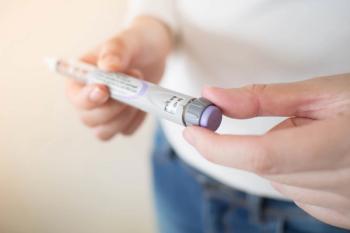
Diabetes Management and the Promise of Telemedicine
Could telemedicine be the answer to diabetes management problems?
PBMs and pharmacists have the same goals when it comes to chronic disease management: reducing adverse events, improving medication adherence, achieving better quality outcomes, and ultimately, reducing costs for their payer-customers.
Diabetes management sits at the heart of these goals as one of healthcare’s greatest challenges. The reality is that approximately 50% of all drug errors involve insulin, according to the U.S. Pharmacopeia Medication Errors Reporting Program. The costs in the United States alone are staggering-$176 billion annually to treat more than 29.1 million patients.
For many pharmacists and PBMs, this statistic probably comes as no surprise, as they see the complexities of daily insulin management-a task that rests primarily with patients. Patients try to make the right dosage calculations, but the reality is that more than
Both pharmacists and PBMs are challenged in their present roles to have a positive impact on insulin management. Pharmacists at the counter can talk to patients when they pick up their medications and initiate follow-up calls to assess side effect and adherence. But without the right tools, they simply don’t have enough information to help patients circumvent adverse events.
Related article:
In the same way, PBMs can reach out to health plans to ensure the right brand of insulin is chosen to match the insurance formulary, but ensuring proper day-to-day dosing is just too burdensome. Additionally, while many pharmacists at a PBM may have the skill and knowledge to adjust medications, they often lack the authority to direct patients to optimal medication choices. And even if they have the authority to adjust medications, without the proper engagement from patients, these clinical pharmacists are left without the necessary data to make informed decisions.
The good news is that telemedicine tools can improve this outlook by providing a real-time feedback loop that empowers patients to follow treatment plans correctly. Even better, these same tools allow clinical pharmacists to track that data in real time-including glucose levels, insulin doses, and adherence rates. These advanced solutions not only help patients successfully self-manage their condition and promote patient engagement, but also enable clinical pharmacists to intervene with their patients, effecting positive behavior changes and dosage titrations that lower, but maintain, healthy A1c levels.
Understanding the Insulin Challenge
Effective management of diabetes requires that providers and patients continually monitor the condition and address the various facets that alter insulin levels. For instance, s patient must calculate each insulin dose based on current blood sugar, the time of day, food that will be consumed or activity performed. If the calculation is inaccurate, the result could lead to further deterioration (hyperglycemia) or an ADE (hypoglycemia).
Many patients struggle to self-manage their condition and make less-than-optimal choices that lead to daily fluctuations in glucose levels. Left to their own devices to calculate the correct insulin dose, industry statistics reveal that up to 50% of patients forget instructions given to them. Physicians and pharmacists know how to do it, but for patients, it’s a hefty responsibility.
Related article:
Insulin doses can be adjusted frequently based on an aggregate of previous days’ glucose values, by “dialing in” to the right dose or carbohydrate ratio. If clinical pharmacists provided through a PBM stay connected to patient data, they can easily determine the right insulin dose. That’s where telemedicine tools can help. By leveraging technology to translate complex dosing regimens into simple instructions using real-time feedback, patients know what to do in the moment. The challenge for PBMs is finding which tools actually deliver, then determining how best to allocate limited resources, such as time and personnel.
Taking Hold of the Telemedicine Opportunity
Telemedicine tools exist that provide real-time feedback that translates complex physician instructions into terms patients can understand. Patients simply enter their blood sugar reading, and the telemedicine app tells them how much insulin to take. Providing real-time feedback makes the patients not only follow the treatment plan correctly, but it also gives the patients confidence that they are doing it right, improving adherence.
Related article:
Fear is a major motivator: If patients fear the consequences of taking too much insulin, there is a greater chance they will forego the therapy. In fact,
Many PBMs have dedicated departments of pharmacists who can make dose changes and intercede on behalf of the patient’s primary care provider. Telemedicine apps that provide a real-time feedback loop can fill needed resource gaps and ensure this ongoing communication happens. Prescribing pharmacists would have the needed data at their fingertips, and changes could be readily available in the patient’s app.
Community pharmacists can also leverage these tools to quickly identify needed data. Telemedicine apps can essentially act as a portable EMR on the patient’s phone as telemedicine providers coordinate care, obtain records, and track medications. When the patient walks into their corner pharmacy, the pharmacist there can easily access a definitive list of medications for interaction checks and coach the patient on the medications they are taking, rather than rely on information from the prescriptions dropped off at that pharmacy.
Related article:
In short, telemedicine tools can provide a vital resource that enables PBMs and pharmacists to meaningfully impact patient outcomes and costs. These tools provide a mechanism for improving adherence, reducing adverse events, and compiling an accurate and up-to-date medication list. For PBMs that don’t have their own titration services, these tools ensure that the patient’s medications are on-formulary, and telemedicine physicians can make the needed changes. For PBMs that use pharmacists to monitor patients, make treatment decisions and change medication doses, these apps provide needed data that is often missing or difficult to interpret, making the decision-making process and interactions with the patient more effective and more efficient.
Newsletter
Pharmacy practice is always changing. Stay ahead of the curve with the Drug Topics newsletter and get the latest drug information, industry trends, and patient care tips.
























































































































